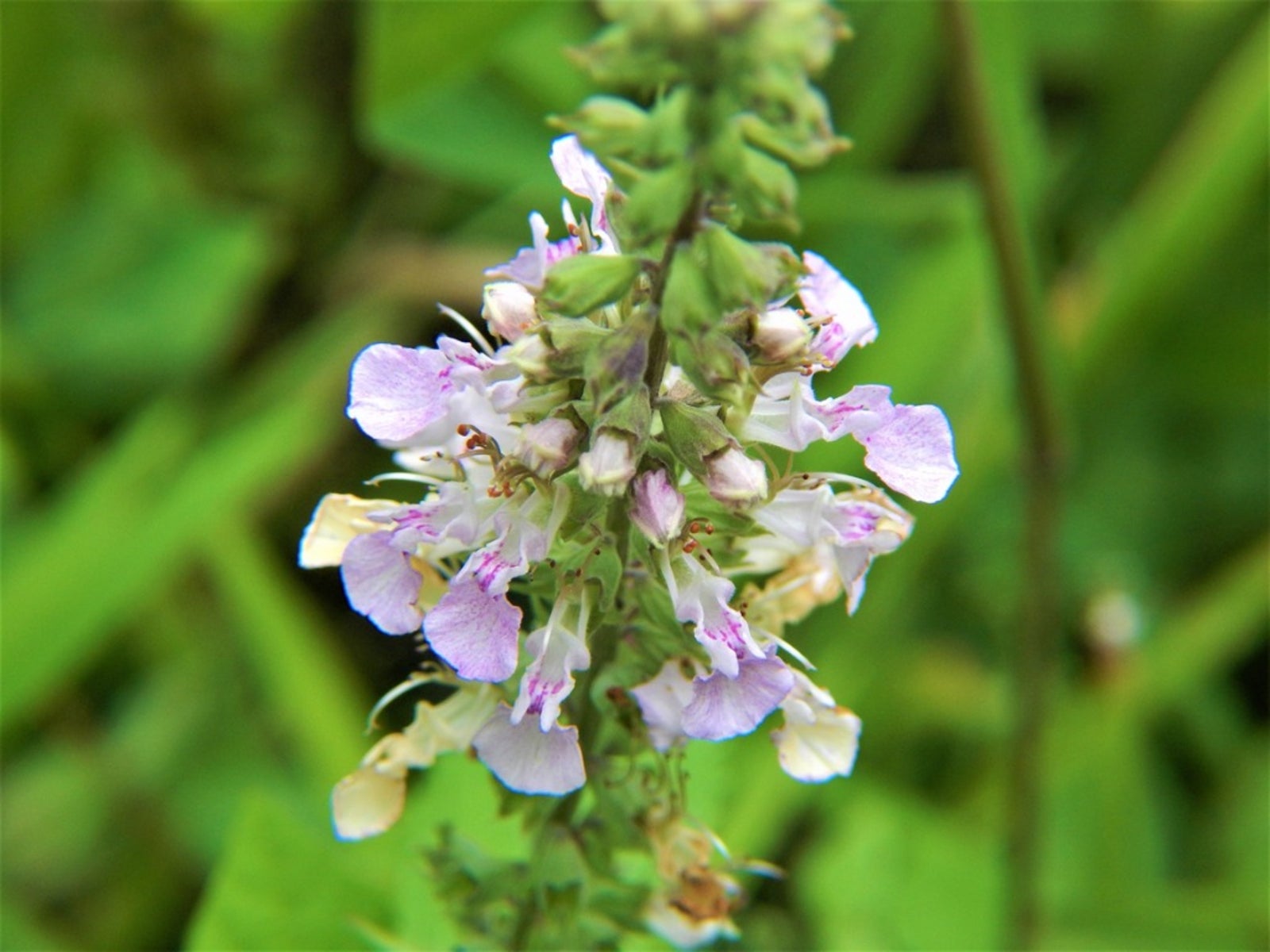
Many herb plants come from the Mediterranean and as such are drought, soil, and exposure tolerant. Creeping germander is one of those. Germander herb plants are members of the Lamiaceae or Mint family, which includes lavender and salvia. This is a large genus of evergreens, from groundcovers to shrubs to sub shrubs. Creeping germander (Teucrium canadense) is a woody, perennial groundcover varietal that spreads through underground rhizomes and reaches to only about 12 to 18 inches (31-46 cm.) tall and spreading 2 feet (61 cm.) across. Germander herb plants bloom lavender hued flowers in the spring borne off of green serrated foliage.
Germander Growing
The adaptable germander groundcover isn't particularly picky about its location. This herb can be grown in full sun to part shade, in hot climates, or poor and rocky soil. Ideally, however, creeping germander prefers well drained soil (pH of 6.3), although clay will work in a pinch. You can grow these little plants in USDA zones 5-10. Due to its ability to tolerate less than ideal conditions, including drought, creeping germander makes an ideal xeriscape specimen. If you live in a cooler climate, mulch around the plants prior to fall frosts.
How to Use Germander Groundcover
All of the Teucriums are low maintenance plants and are, therefore, perfect for planting in difficult areas of the garden. They all also react beautifully to pruning and can be shaped easily into borders or low hedges, used in knot gardens, among other herbs, or in a rockery. Their easygoing care is just one reason to plant creeping germander; they are deer resistant as well!
Varieties of Low Growing Germanders
Teucrium canadense is just one of several germanders with a creeping habitat. A little easier to find is T. chamaedrys, or wall germander, with a short mounding form up to 1 1/2 feet (46 cm.) tall with pinkish purple blooms and oak leaf shaped foliage. Its name derives from the Greek ‘chamai' for ground and ‘drus' meaning oak and is indeed a germander found growing wild in Greece and Syria. T.cossoni majoricum, or fruity germander, is a slower growing spreading perennial that is non-invasive with rosy lavender flowers. Flowers are heaviest in the spring but continue to bloom in lesser numbers until fall, which makes the pollinators very happy. Fruity germander has a strong aromatic scent when bruised and does well among rock gardens. T. scorodonia ‘Crispum' has soft ruffled green leaves and spreads rapidly.
Further Information on Creeping Germander
Germander can be propagated via seed and takes about 30 days to germinate, or you may also use cuttings in the spring and/or divide in the fall. Plants should be spaced 6 inches (15 cm.) apart for a hedge with the addition of some organic matter worked into the soil. Spider mite infestations are a hazard and can be eradicated with a stream of water or an insecticidal soap.
Sign up for the Gardening Know How newsletter today and receive a free copy of our e-book "How to Grow Delicious Tomatoes".

Amy Grant has been gardening for 30 years and writing for 15. A professional chef and caterer, Amy's area of expertise is culinary gardening.
